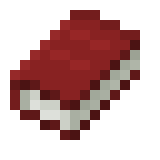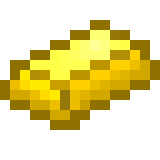Reviewer: Steven Green
Developer: Art Co., Ltd
Publisher: PQube
Category: Visual Novel / Puzzle
Release Date: 05.31.2019 (EU) | 06.04.2019 (NA)
Price (At Time of Review): $29.99 Digital | $39.99 Physical
Buy Kotodama: The 7 Mysteries of Fujisawa in the Nintendo eShop here.
Buy Kotodama: The 7 Mysteries of Fujisawa from Amazon here.
Skeletons and Closets
Kotodama: The 7 Mysteries of Fujisawa is a visual novel game that utilizes match-three puzzle gameplay and a ton of mystery to take the player on an adventure through the darker side of characters who appear to be everyday people. Between the dark forces around you, the classmates with questionable motives, and oblivious teachers you are about to go on a journey of the mind and soul that will delight you not only with its super anime vibes, but with its charm and roller coaster of a story.

Groundhog Day
This story is exactly what you might expect it to be, and at the same time is nothing that you could consider. You play as a new transfer student with an odd past of your own who has just started at the illustrious Fujisawa Academy. You meet up with some new friends and are convinced to help with the ORC, the school’s Occult Research Club. At this school you learn of seven mysteries that are plaguing the student body and you enroll yourself to the cause of solving these mysteries, regardless of what you may uncover at the end. Kotodama: The 7 Mysteries of Fujisawa uses classic anime tropes for its mysteries and throughout the story in general to lull you into a sense of understanding.
The game takes pleasure in then taking that understanding and crushing it with mysteries hiding under every turn. I found myself feeling so sure of myself and what was going on multiple times, and even though some things can be sleuthed through, you find yourself in situations that you would not expect repeatedly. The point of the game is to not only experience the game once, but to play through multiple times in order to get the full understanding of what is happening at the school. On your first playthrough you are just getting your feet wet, and from there you use your knowledge to try to make the right moves in order to do what is right.

Puzzle-gasm
The main part of the game is the story, but as you traverse that madness you find yourself in situations in which you have a character not telling you the truth. In order to resolve that issue, through slightly evil means, you use the power of Kotodama in order to strip away the lies and get to the truth. Kotodama is the power of words, and with this power you can penetrate the mind of your target and get to the bottom of any mystery. The gameplay behind this act consists of you completing a match-three puzzle game, where with progress, the target becomes less and less clothed, and more and more exasperated. The explanation behind this intrusive act is that the Kotodama can be symbolized in any way based on your own personality and imagination, as explained by your little fox friend Mon-Chan.
It could look like something as mundane as peeling an onion. However, due to you being a teenager, your personality has other things going on in it. It is a little out of place in the story, but it wouldn’t be a classic visual novel without this aspect of it, I suppose. Anyways, during these puzzle phases you use power-ups to increase the number of moves you have and are trying to get as big of a combo as you can in as few moves as possible in order to fill up the target’s happiness gauge. Each character has a certain colored tile they are weak against, and the power of those colors increases as you discover more “power words” in the real-world gameplay. Once fulfilled you have beaten the puzzle and you get the information you are looking for.

Right or Wrong
The other part of the gameplay consists of going through the story and listening carefully to what is happening. You will have several times throughout the game where you must go to the right location or say the right thing in order to get the outcome you are looking for. This is especially important as you progress towards the end game, as you are looking for specific things to happen and need to be in certain places at exact times to trigger those events. Otherwise, this part of the game is simple. Read the text and try to decipher what is happening around you. Progress through the story and make sure you are doing the right things.
This part of the game can potentially get frustrating for the player as you get further and put more play-throughs under your belt, as sometimes the hints can be super subtle, and I found myself lost from time to time even on my fourth or fifth full play-through. I would suggest taking notes when you discover you have triggered a new event, as you run through so many times that it’s possible to forget how you made that happen, especially if you are playing across multiple days. This part of the game is crucial to getting to the end, so you really must know exactly what to do when and where. The game does offer a tips page on the start menu that is invaluable to keeping track of what you have learned, and potentially what you still need to discover.

Save Heaven
Luckily, the game offers some tools to the player in order to make these reoccurring play-throughs less stressful and frustrating. You have a fast forward option that shoots you past conversations you have already had, and specifically won’t work if there is something new happening so you don’t miss anything. They also have a quick save and quick load function that, for console players, is something that you will be happy to have. Quick saves and loads aren’t that common in console games; being mostly used in PC versions, but the addition and emphasis in the console version is a life saver. I will say you have to be careful with your saves. Save often and don’t forget it.
Hard saves show up in the save menu, but quick saves do not, so I found times where when I would “Game Over” I would have to load up a super old save, and then immediately quick load to get to where I was. You didn’t lose your save if you quick save; it is wonky, but just do the load and then immediately quick load. This is vitally important, as the puzzles you complete get harder as you progress, and if you fail a puzzle you start from your last save; no retry feature here. So, in order to avoid having to run through mass amounts of dialogue to get back to a puzzle just make sure to use your saves. Obviously, the saves are also helpful when making story decisions to try to decide what you want to do.

Everything Else
Besides these main parts of the game you also have a few additional things that will take up your time in this title. Another story feature is the “Quacker”. Think Twitter, but anime, and tons of quacking ducks for some reason. As with most students (and pretty much everyone at this point) social media is a huge part of what is going on, and this game is no different. You can regularly check Quacker for what’s new and what the students at the academy are posting about.
There is also a Fantasize mode that takes place in your dorm room (or the main title screen), in which you can practice your puzzle skills while going for high scores. You unlock targets from progressing through the story and different outfits can also be unlocked based on uncovering additional story brackets that allow you to unburden the characters of other secrets they have. This also offers extra replay potential if you are a big fan of the puzzle mechanic and don’t get enough content from the multiple play-throughs it takes to complete the story of the game.
The art style doesn’t really divulge from what you have seen in other visual novels or anime-based games, but the art is great, nonetheless. Especially in the scenes that shoot into cutscenes, where you get some special art. Musically, the game has a pretty upbeat soundtrack, and consists of a lot of cheery background noise. However, when the scene changes to dramatic the score really shows what it can do. I believe this is a continuation on what I said earlier on the story lulling you into a sense of security. The music makes you think everything is fine, and then in the blink of an eye you have some super eerie sounds emanating from your TV.

In closing…
Kotodama: The 7 Mysteries of Fujisawa is a good game. The story is interesting, and multiple times my jaw dropped based on what was happening. The end credits sequence had me freaking out. Match-Three puzzle games aren’t for everyone, but this game offers a decent version of its own, and it’s a bit more interesting than a game like Candy Crush with the unburdening that is taking place. I didn’t find anything that really bothered me about the game beyond potentially frustrating runs through the game if you accidentally mess up the sequence of events and must start from the beginning again. The repeated play-throughs can get bland when searching for one or two last things, but overall as you find what you are looking for the discovery makes it worth it. If you are a visual novel fan, then this is one you are going to want to play. For everyone else, I would say if you have ever been curious about visual novels or like anime then try it out; you might be surprised by how good it is.
Score: 8/10
Buy Kotodama: The 7 Mysteries of Fujisawa in the Nintendo eShop here.
Buy Kotodama: The 7 Mysteries of Fujisawa from Amazon here.
Follow Art Co, Ltd
Follow PQube
*Review Code Provided by PQube
Categories
Recent Posts
Tags
#Broforce #dev #DRIVE #FE #indie #indies #Kickstarter #kickstarter #Minit #nindies #Nindies #Nintendo #NintendoSwitch #Owlboy #RaceDieRun #Switch #SwitchCommunity #switchcorps #SwitchCorps #SwitchCorps #Switchiversary #SwitchLewd #SwitchLewds #Switchruary #Twitch #videogames #VitaIsland #YouTube




Leave a Reply